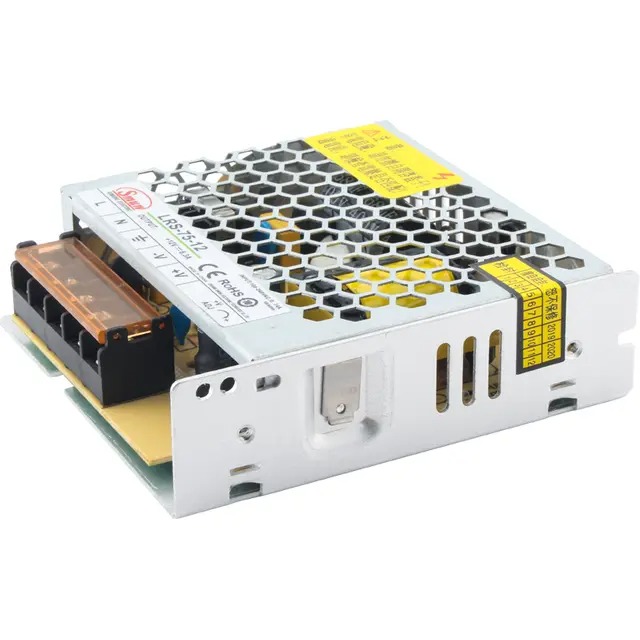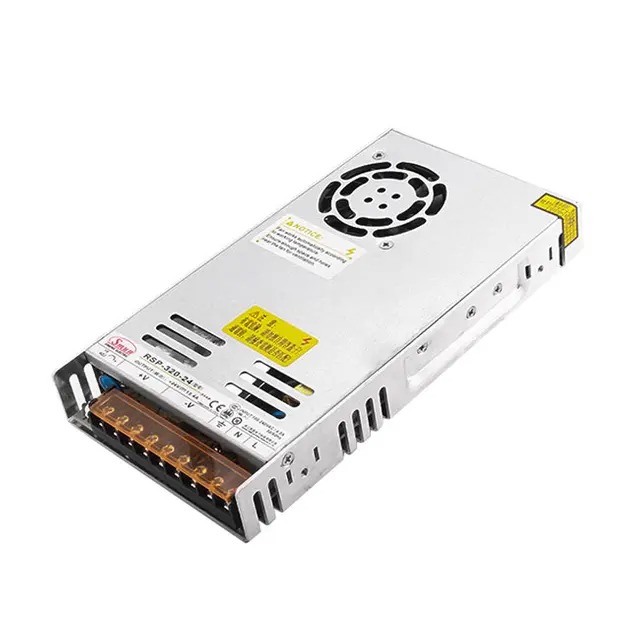
When designing or selecting a power source for electronics, two main types come into focus: Linear Power Supply and Switching Power Supply. Both have their place in industrial, commercial, and consumer applications, but they operate on vastly different principles and serve distinct purposes. This article dives deep into the differences, advantages, limitations, and applications of these two essential technologies.
Let’s explore the nuances of linear vs switching power supplies and help you make an informed decision.
Introduction to Power Supply Fundamentals
Every electronic device relies on a stable and reliable power source. The job of a power supply unit (PSU) is to convert electrical energy from one form to another—typically from alternating current (AC) to direct current (DC)—at the required voltage and current levels.
There are two dominant technologies used for this conversion:
While both perform similar tasks, the internal architecture, energy efficiency, thermal performance, and size differ dramatically. A linear power supply uses a transformer and linear regulators to step down voltage. In contrast, a switching power supply uses high-frequency switching components and advanced circuits to regulate voltage and current.
This fundamental distinction gives rise to a range of performance characteristics and suitability across various applications.

What is a Switching Power Supply?
A Switching Power Supply—also referred to as a switch-mode power supply (SMPS)—converts electrical power using high-frequency switching regulators and energy storage components such as inductors and capacitors. The LRS-100 series, for example, is a compact and efficient AC-DC switching power supply widely used in industrial control systems, LED lighting, and communication equipment.
How It Works
Switching power supplies function by rapidly switching on and off semiconductor devices like transistors or MOSFETs. Here’s a simplified breakdown:
AC Input: The supply accepts standard AC voltage.
Rectification and Filtering: The AC voltage is converted to DC using a bridge rectifier and filter capacitors.
High-Frequency Conversion: The DC voltage is fed into a high-frequency oscillator (typically 20kHz–1MHz).
Transformation and Regulation: The voltage is stepped up or down via a transformer and controlled using feedback loops.
Output Filtering: The output is smoothed to provide clean DC power.
Benefits of Switching Power Supplies
These characteristics make switching power supplies ideal for modern applications where space, heat management, and energy efficiency are paramount.
What is a Linear Power Supply?
A Linear Power Supply is the more traditional form of AC to DC power conversion. It relies on a transformer to step down voltage and uses linear voltage regulators to maintain a constant output voltage. Though largely replaced by switching types in many areas, linear power supplies are still used in specific applications where electrical noise must be minimized.
How It Works
The operation is relatively simple and involves the following stages:
AC Input: Standard AC power enters the transformer.
Voltage Transformation: The transformer reduces the voltage to the desired level.
Rectification and Filtering: Converts AC to DC using a rectifier and filter.
Voltage Regulation: A linear regulator ensures a stable output, even if the input fluctuates.
Drawbacks of Linear Power Supplies
Low Efficiency (Often < 60%)
Heavy and Bulky
Heat Generation Requires Large Heatsinks
Limited Input Voltage Range
Because linear power supplies dissipate excess energy as heat, they are inefficient and less suitable for high-current or compact applications.

Linear vs Switching Power Supply – Side-by-Side Comparison
To help visualize the differences, here’s a simplified comparison chart:
| Feature | Linear Power Supply | Switching Power Supply |
| Efficiency | 40% – 60% | 80% – 95% |
| Size and Weight | Large and heavy | Compact and lightweight |
| Heat Dissipation | High | Low |
| Output Noise | Very low (quiet) | Higher (but manageable) |
| Input Range | Narrow | Wide AC input range |
| Design Complexity | Simple | Complex circuitry |
| Cost (per watt) | High | Lower per watt |
| Best Use Case | Audio, lab equipment | Industrial, lighting, computing |
This table reinforces why switching power supplies like the LRS-100 series are dominating the modern power landscape.
Why Choose Switching Power Supplies in Modern Applications?
With increasing demands for energy efficiency, compact form factors, and cost-effectiveness, switching power supplies are now the go-to solution in many industries. Here's why:
Energy Efficiency & Green Compliance
Energy consumption is now a global concern, both environmentally and economically. Switching power supplies achieve higher conversion rates, which translates into lower energy costs and reduced carbon footprints. They comply with international energy efficiency standards like Energy Star, ErP, and 80 PLUS, making them ideal for global deployment.
Versatility and Flexibility
Switching power supplies offer broad input voltage ranges (like 85~264VAC), making them perfect for international use without needing voltage converters. This feature is vital in automation systems, LED drivers, and telecommunications equipment.
Space-Saving and Lightweight Design
Devices are becoming more compact and portable. Traditional linear power supplies, with their large transformers and heatsinks, struggle to fit into these shrinking spaces. Switching power supplies use high-frequency transformers, enabling a much smaller footprint.
Common FAQ: Your Top Questions Answered
Let’s address some frequently asked questions related to switching and linear power supplies:
Q1: Which power supply is more reliable—linear or switching?
A1: Both can be reliable if well-designed. However, switching supplies tend to be more efficient and longer-lasting in industrial settings due to better thermal management.
Q2: Is the noise from a switching power supply harmful to sensitive equipment?
A2: Not usually. Most switching power supplies incorporate filters to minimize EMI/RFI. For ultra-sensitive audio or RF equipment, linear supplies might be preferable.
Q3: Are switching power supplies more expensive?
A3: Not necessarily. While the internal components are more complex, mass production and higher efficiency often make switching power supplies more cost-effective over time.
Q4: Can I use a switching power supply for audio systems?
A4: It depends on the application. For high-end audio gear, linear supplies might offer better performance due to lower electrical noise, but many modern designs use switching supplies with adequate filtering.
Conclusion
The decision between linear and switching power supplies comes down to your specific application requirements.
If you prioritize clean power and ultra-low noise, and space or heat isn’t a concern, linear power supplies might still be a fit.
But if you're working with space-constrained, high-efficiency, and globally deployed systems, there's no question: a switching power supply like the LRS-100 series is the smarter choice.
These compact power solutions combine efficiency, versatility, and cost savings—an unbeatable combination for today’s fast-evolving technological needs.






















